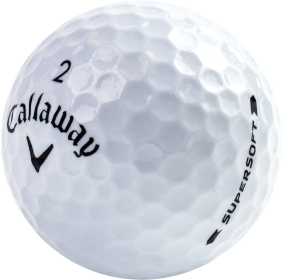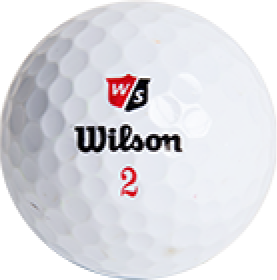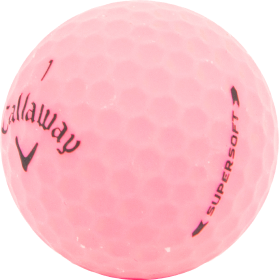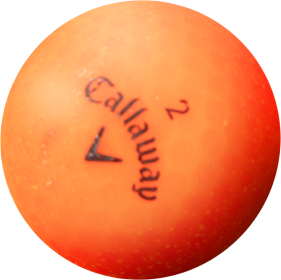7 Smart Ways to Pick Your Target on the Golf Course (and Instantly Drop Strokes)

Introduction
Ever stripe a drive perfectly… straight into trouble? You swung great—but you aimed poorly. Target selection is the quiet superpower of consistent golfers. Choose a smarter target and your swing gets calmer, your miss gets safer, and your scores trend down. In this guide, you’ll learn how to pick precise, confidence-boosting targets on every shot—tee to green—so you can play aggressively to safe spots and watch your handicap fall. Here is a precise use case video from D1 Golfer Quade Woods
Why Targeting Lowers Scores
Golf isn’t just about how you swing; it’s about where you’re swinging. Clear, precise targets do three things:
-
Reduce decision fatigue (fewer “uh-oh” moments over the ball)
-
Tighten dispersion (you’ll miss near your plan, not away from it)
-
Improve commitment (committed swings are almost always better swings)
Sports psychology calls this “external focus.” When your brain locks onto a small, specific spot, you move more efficiently and with less tension. That’s free performance.
The Targeting Blueprint (Tee to Green)
1) Start With the Big Picture: The Safe Side
Before you grab a club, pick a safe zone (fairway half or green quadrant) that maximizes your average outcome. If your miss is a fade, aim to the left side of the fairway or green so your typical curve finishes center-right. Want a simple rule? Aim away from the biggest penalty (water, OB, thick fescue).
Pro tip: Think in dispersion cones, not laser lines. Your shot pattern is a cone—choose targets that keep most of that cone in play.
2) Choose a Small, Sharp Target
“Aim small, miss small.” Trade vague (“the green”) for precise (“the left edge of the middle bunker”). On fairways, pick tree branches, yardage plates, or a distinct blade of grass. Into greens, choose a specific cup-side (front-left, back-right) or a spot on the fringe if the pin is tucked.
3) Use an Intermediate Target
On every full shot, find a mark 3–6 feet ahead of the ball (discolored tuft, divot, leaf) that points to your ultimate target. Align the clubface to that short spot first; then set your feet. This reduces alignment errors and boosts commitment.
4) Play the Wind, Lie, and Elevation—Before You Aim
-
Wind: Choose a target upwind of your ideal finish to let the breeze bring it back.
-
Lie: Ball below feet tends to fade; above feet tends to draw. Adjust your starting line accordingly.
-
Elevation: Uphill adds spin and launches higher; downhill does the opposite. Move your target to account for carry and rollout, not just yardage.
5) Respect Trouble by Giving It Space
If there’s water right and your miss is also right, that’s a double-down risk. Take the smart line: more left target, more club, and commit to a neutral shape. Trading three yards of “perfect” for twenty yards of safety is how golfers shoot new personal bests.
6) On Approach Shots: Pick the Correct Quadrant
Forget “pin hunting” when the flag is on a shelf or tucked. Choose the correct quadrant (front/back, left/right) and play to its fat middle. You’ll have more birdie putts and fewer short-sided chips.
7) On the Greens: Start Line > Hole
Stand behind the ball and pick a dime-sized spot 6–12 inches in front of it on your intended start line. Roll the ball over that spot. This keeps your focus on start line instead of “holing it,” which eliminates yips-inducing tension.
Shot-by-Shot Targeting Examples
Tee Shot (Par 4 with right-side water)
-
Big picture: Avoid right.
-
Small target: A tree trunk on the left edge of the fairway 240 yards out.
-
Plan: Play your typical fade back to center. If it stays straight, you’re safe left; if it fades, you’re perfect.
Approach (Left pin tucked behind bunker)
-
Big picture: Miss short-left is dead.
-
Small target: 12 feet right of the pin, middle-depth of green.
-
Plan: Take one extra club and swing smooth. Two-putt par beats short-sided bogey.
Greenside Pitch (Downhill to fast pin)
-
Big picture: Can’t miss long.
-
Small target: A landing spot onto a flat tier before the slope.
-
Plan: Land it short, let it release. Your target is the landing spot, not the hole.
A Simple Pre-Shot Target Routine (20 Seconds)
-
Map: Identify the danger and safe side.
-
Decide: Choose a precise small target that honors your dispersion.
-
Align: Pick an intermediate target 3–6 feet ahead and set clubface to it.
-
Rehearse: One rehearsal matching your intended shot shape.
-
Commit: Final look at the small target, swing with tempo.
This routine builds speed, clarity, and repeatability—exactly what lowers scores.
Practice Drills to Sharpen Targeting
Fairway Gate Drill: Place two headcovers 10–15 yards apart downrange. Your goal is to start shots through the “gate.” Shrink the gate as you improve.
Green Quadrant Game: On the practice green, drop tees to create four quadrants. Pick a specific tee as your hole-side target and roll putts that finish pin-high in that quadrant.
Intermediate Laser: On the range, lay a club 3–6 feet ahead of the ball pointing at your final target. Train your eyes to set the clubface to that short line every time.
Frequently Asked Questions
Q: Should I always aim at the flag?
A: No. Aim at the smartest spot that leaves an easy up-and-down or two-putt. Flags tucked behind trouble are green-light traps—play the quadrant.
Q: What if I don’t shape the ball on purpose?
A: Plan for your typical miss. If your stock shot floats right, start it more left and choose targets that make a right-miss safe.
Q: How do I aim when I’m nervous?
A: Shrink your focus. Pick a tiny target, use the intermediate spot, and breathe. Small targets quiet big nerves.
Q: Does target selection matter on short shots and putts?
A: Absolutely. For chips, pick a landing spot the size of a coaster. For putts, pick a start-line speck 6–12 inches ahead.
Q: How do I adjust for wind without overthinking?
A: Choose a new small target that the wind will work the ball toward. Then commit. One decision—no last-second changes.
Conclusion
Target selection is the fastest scoring upgrade most golfers ignore. When you choose a smart safe side, lock onto a small target, use an intermediate alignment point, and honor your dispersion, you turn “good swings, bad scores” into confident swings, better scores. Start with the routine above for your next round, and watch how many stress-free pars appear.











